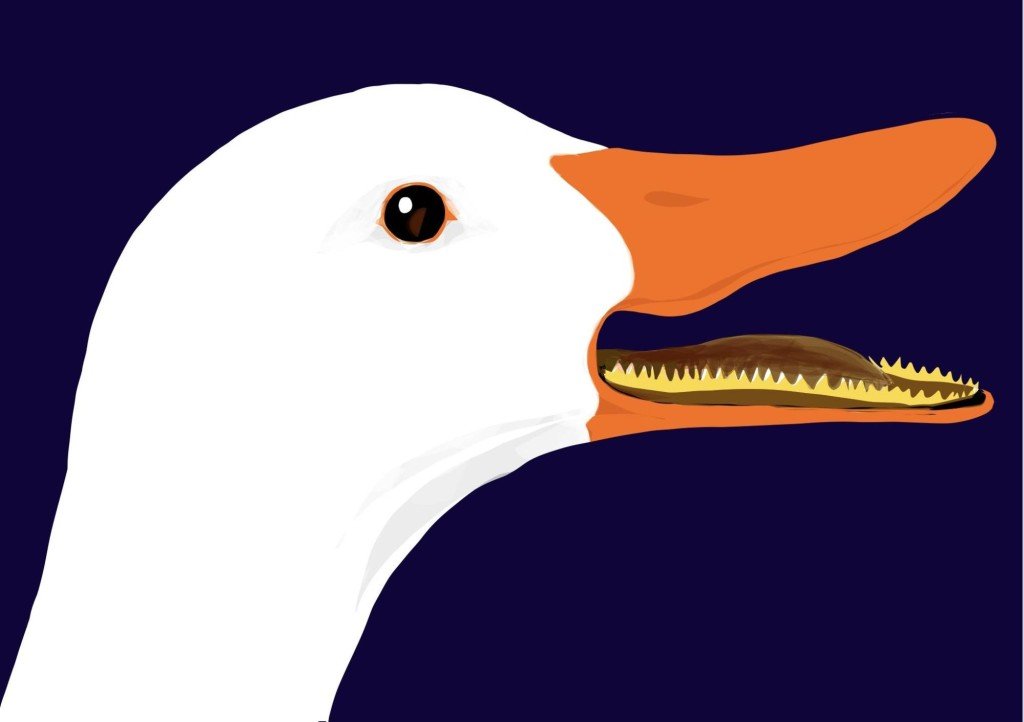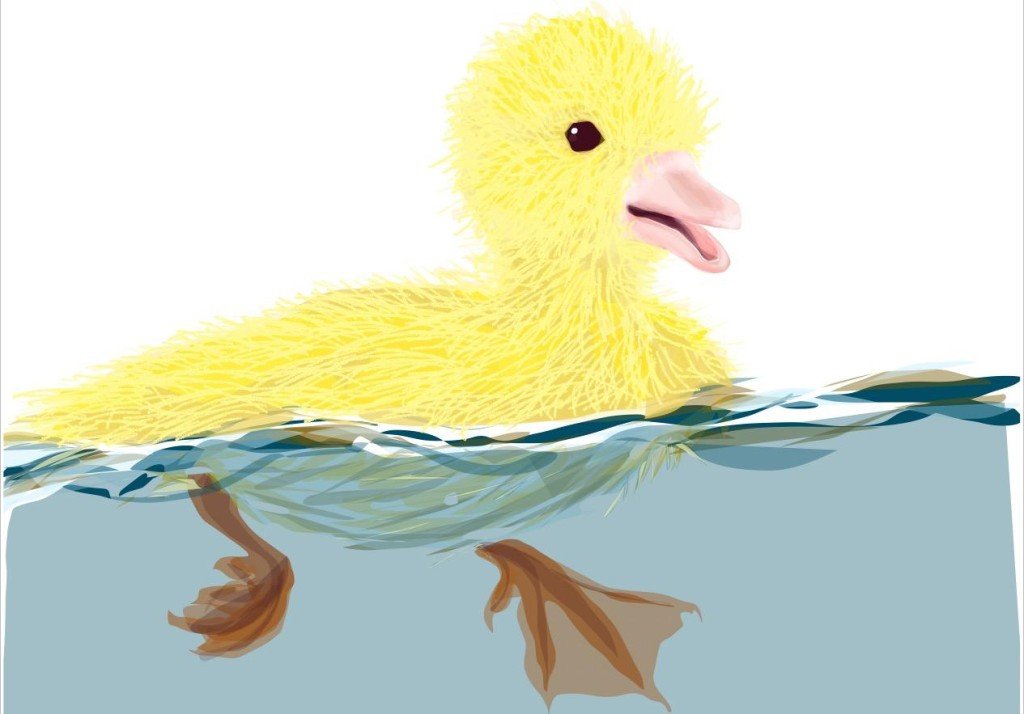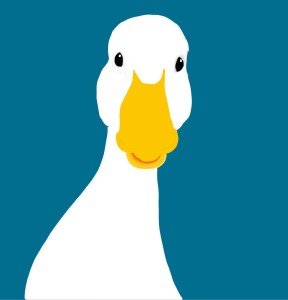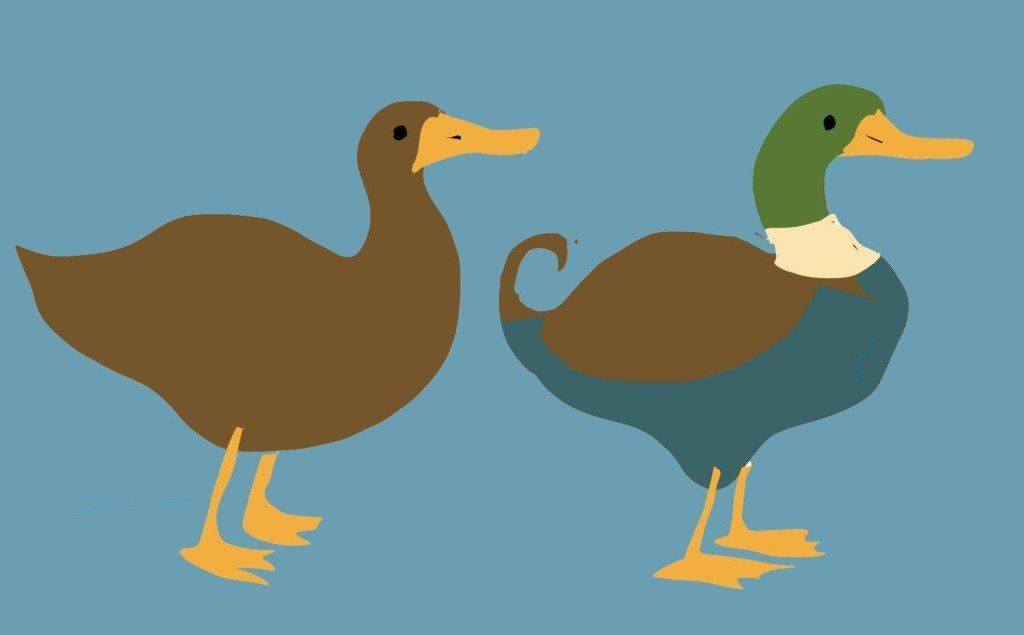The Wonderful Creatures of Mudchute Farm: Ducks
The word Duck comes from the old English word for ‘diver’.Ducks are birds that are smaller than swans or geese who also live on fresh or salt water. They have strong scaly legs and short strong wings.There are many different sorts of Duck and several of them live at Mudchute.A few years ago the farm designed and made a beautiful habitat with lots of luscious planting of grasses and reeds for the Ducks to enjoy around their pond. The Ducks really, really loved it and pulled up and ate every scrap.
 Ducks don’t have any teeth, but the edges of their bills (that’s the name for a Duck’s beak) are serrated, meaning it is zig zaggy, up and down, with little gaps left between the closed upper and lower bill so that they can keep food safe and ready to eat, while the water is strained away. Another clever trick that they have evolved is to swallow small bits of gravel and sand which they keep in part of their throat called a gizzard. They use this a bit like a food blender to break down the stuff they are trying to digest.They use sand to bathe and clean themselves, because their feathers are naturally oily and water runs right off them. So they wiggle around in a dusty patch and preen the dust through their feathers to get rid of little insects called mites. This also helps their bodies to produce the waxy waterproofing oil and spread it throughout their plumage.Female ducks lay eggs which hatch into ducklings if the Duck and Drake (male duck) have mated. She is able to lay more eggs in the summer months when there are lots of hours of sunlight.Ducks are caring mothers and sit on their eggs to protect them and keep them warm so they hatch safely into ducklings. Very occasionally though, she gets forgetful and wanders away from the eggs. If this happens at Mudchute, the Farmer will take the ducks’ eggs and pop them under a brooding Hen to let her hatch them instead. The brand new ducklings will assume that this Hen is their mother and follow her around loyally.
Ducks don’t have any teeth, but the edges of their bills (that’s the name for a Duck’s beak) are serrated, meaning it is zig zaggy, up and down, with little gaps left between the closed upper and lower bill so that they can keep food safe and ready to eat, while the water is strained away. Another clever trick that they have evolved is to swallow small bits of gravel and sand which they keep in part of their throat called a gizzard. They use this a bit like a food blender to break down the stuff they are trying to digest.They use sand to bathe and clean themselves, because their feathers are naturally oily and water runs right off them. So they wiggle around in a dusty patch and preen the dust through their feathers to get rid of little insects called mites. This also helps their bodies to produce the waxy waterproofing oil and spread it throughout their plumage.Female ducks lay eggs which hatch into ducklings if the Duck and Drake (male duck) have mated. She is able to lay more eggs in the summer months when there are lots of hours of sunlight.Ducks are caring mothers and sit on their eggs to protect them and keep them warm so they hatch safely into ducklings. Very occasionally though, she gets forgetful and wanders away from the eggs. If this happens at Mudchute, the Farmer will take the ducks’ eggs and pop them under a brooding Hen to let her hatch them instead. The brand new ducklings will assume that this Hen is their mother and follow her around loyally. Ducklings are independent from the very first moment that they hatch. Their eyes are wide open and they already have a coat of downy fluffy feathers.They can fly by the time they are two months old.There are ducks native to every continent of the world (except Antarctica,) and they fly thousands of miles from very hot climates, to very cold ones.
Ducklings are independent from the very first moment that they hatch. Their eyes are wide open and they already have a coat of downy fluffy feathers.They can fly by the time they are two months old.There are ducks native to every continent of the world (except Antarctica,) and they fly thousands of miles from very hot climates, to very cold ones. Have you ever wondered how they manage to paddle comfortably around in freezing water in the winter and flip flap over hot tarmac at the height of summer?The answer is that they have amazingly clever feet. Their feet are very boney and sinewy covered with scaley skin, which joins up between the toes to help them swim more powerfully just like diving flippers.They have few nerves in their feet and the blood vessels have evolved in the most brilliant way. (Blood vessels are like one way tunnels that carry the oxygenated blood of creatures from the heart and around the body. Another set of blood vessels takes the tired blood, which has delivered its load of oxygen, back to the heart to have more put back in.)In ducks’ feet these blood vessels run in an intricate interwoven system so that the warm blood from the heart and the cool blood from the chilly feet, flow closely together and make sure that extremes of temperature don’t harm the dear old duckDucks are prey animals, that means that a lot of other creatures like to hunt them for food. One way that they have of protecting themselves from attack is to hang around in large numbers. They fall asleep all tucked up neatly in a sort of circle and take it in turns to be sentries on the edge of the circle. These guard ducks sleep with one eye open and watching for danger ready to warn the whole group. This means that they can chose which side of their brain stays awake at any time. All of the rest of the ducks are very alert to attack, even when they are sleeping and they can all fly away with less than one seconds’ notice.
Have you ever wondered how they manage to paddle comfortably around in freezing water in the winter and flip flap over hot tarmac at the height of summer?The answer is that they have amazingly clever feet. Their feet are very boney and sinewy covered with scaley skin, which joins up between the toes to help them swim more powerfully just like diving flippers.They have few nerves in their feet and the blood vessels have evolved in the most brilliant way. (Blood vessels are like one way tunnels that carry the oxygenated blood of creatures from the heart and around the body. Another set of blood vessels takes the tired blood, which has delivered its load of oxygen, back to the heart to have more put back in.)In ducks’ feet these blood vessels run in an intricate interwoven system so that the warm blood from the heart and the cool blood from the chilly feet, flow closely together and make sure that extremes of temperature don’t harm the dear old duckDucks are prey animals, that means that a lot of other creatures like to hunt them for food. One way that they have of protecting themselves from attack is to hang around in large numbers. They fall asleep all tucked up neatly in a sort of circle and take it in turns to be sentries on the edge of the circle. These guard ducks sleep with one eye open and watching for danger ready to warn the whole group. This means that they can chose which side of their brain stays awake at any time. All of the rest of the ducks are very alert to attack, even when they are sleeping and they can all fly away with less than one seconds’ notice. Their eyes also help protect them, sticking out slightly on the sides of their heads. This means that they can see almost all around them, a full 340°.Amazingly their eyes are shaped so that they can see both close to and far away at the same time.They have three eyelids, one of them is transparent so that they can close it and still see while they are underwater.They see in colour, just like humans.There are quite big differences between the male and female Ducks. These vary widely in each species. However it is the male Duck, or Drake, that has that rather dapper curly tail and usually, brighter coloured feathers. The female Duck has duller looking plumage than the rather fancy Drake. However when the pair have mated and their eggs are laid, both the male and female Ducks ‘moult’ losing their usual plumage. At this time neither the male nor the female can fly so they have to be super careful and attentive while they are guarding their eggs. Part of the way they can do this so well is that they now are both very dull colours, they both look the same and are carefully camouflaged so that they blend into their surroundings.
Their eyes also help protect them, sticking out slightly on the sides of their heads. This means that they can see almost all around them, a full 340°.Amazingly their eyes are shaped so that they can see both close to and far away at the same time.They have three eyelids, one of them is transparent so that they can close it and still see while they are underwater.They see in colour, just like humans.There are quite big differences between the male and female Ducks. These vary widely in each species. However it is the male Duck, or Drake, that has that rather dapper curly tail and usually, brighter coloured feathers. The female Duck has duller looking plumage than the rather fancy Drake. However when the pair have mated and their eggs are laid, both the male and female Ducks ‘moult’ losing their usual plumage. At this time neither the male nor the female can fly so they have to be super careful and attentive while they are guarding their eggs. Part of the way they can do this so well is that they now are both very dull colours, they both look the same and are carefully camouflaged so that they blend into their surroundings. Oh and the Drake says ‘quack’ and the female duck says ‘quack quack’... who knew?
Oh and the Drake says ‘quack’ and the female duck says ‘quack quack’... who knew?
